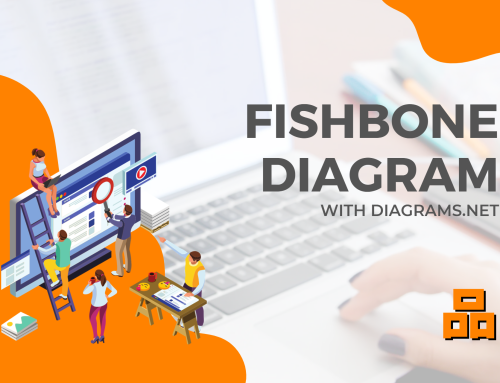Introduction:
Business Process Model and Notation (BPMN) is a powerful graphical modeling language that enables you to represent your organization’s processes in a standard way visually. As a widely used process modeling standard, it provides a consistent framework for understanding, analyzing, and optimizing your business processes. In this blog post, we’ll guide you through BPMN and demonstrate how to utilize it for process modeling in Diagrams.net, a free, open-source tool that enables you to create diagrams, flowcharts, and process maps.
What is BPMN?
BPMN, which stands for Business Process Model and Notation, is a standardized graphical notation that was developed by the Object Management Group (OMG).
Its purpose is to provide a common language for describing, analyzing, and improving business processes. To achieve this, BPMN uses standardized symbols and shapes to represent different elements of a process, such as tasks, events, gateways, and flows. Moreover, the notation also defines the relationships between these elements, enabling you to model complex processes clearly and consistently.
With the use of BPMN, you can achieve greater clarity and accuracy in your process documentation, as well as improved communication and collaboration across different teams and stakeholders. In short, BPMN is a powerful tool for enhancing the effectiveness and efficiency of your business processes.
How can you draw BPMN in Diagrams.net?
Diagrams.net provides a variety of BPMN shapes and symbols that you can use to create BPMN-compliant process models.
Here’s how to use them:
- Open Diagrams.net and click ‘File’-> ‘New,’ and click “Business” in the list of templates.
- Locate and select the “BPMN” shape and click ‘Create.’ You can use BPMN shapes from the shape library or create custom shapes.
- Use the “Connect” tool to connect the elements of your process. In addition, You can use different types of connectors to represent different flows, such as sequence, message, and association.
- Use the “Format” toolbar to customize the appearance of your process model. You can change the color and style of shapes, add borders, and adjust the size and spacing of elements.
- Once you’re satisfied with your process model, save it to your computer or share it with others using Diagrams.net’s collaboration features.
BPMN Elements and Symbols
BPMN includes a variety of elements and symbols that you can use to model your business processes. Here are some of the most common ones:
- Tasks: Represent the work or actions that need to be performed in the process. Tasks can be manual or automated.
- Events: Represent the occurrences that trigger or terminate a process or activity. There are three types of events: start events, intermediate events, and end events.
- Gateways: Represent decision points or branching in a process. There are three types of gateways: exclusive, inclusive, and parallel.
- Flows: Represent the sequence or order of activities in a process. There are several types of flows, including sequence flows, message flows, and association flows.
- Artifacts: Represent additional information or documentation associated with a process, such as text annotations, data objects, and groups.
We have provided you with the default template to start with. You can right-click and download the image, then open it in Diagrams.net.

Conclusion
BPMN is a highly effective tool that can aid in modeling and analyzing complex business processes. By utilizing BPMN in Diagrams.net, you can easily create clear and consistent process models, ultimately enhancing your organization’s efficiency and effectiveness. With the aid of Diagrams.net’s user-friendly interface and extensive library of BPMN-compliant shapes and symbols, generating professional-quality process models that are both easy to comprehend and share has never been easier.
Copyright notice:
diagrams.net is a trademark, and draw.io is a registered trademark of JGraph Ltd and draw.io AG. In addition, JGraph Ltd is a company registered in England, and draw.io AG is the company registered in Switzerland. Jointly, these companies develop and own the software, run the diagrams.net and draw.io sites, and own the diagrams.net and draw.io brands.
Read more about the diagrams.net open-source project.
Check out our other posts on quality management tools in the QA-tools category!






